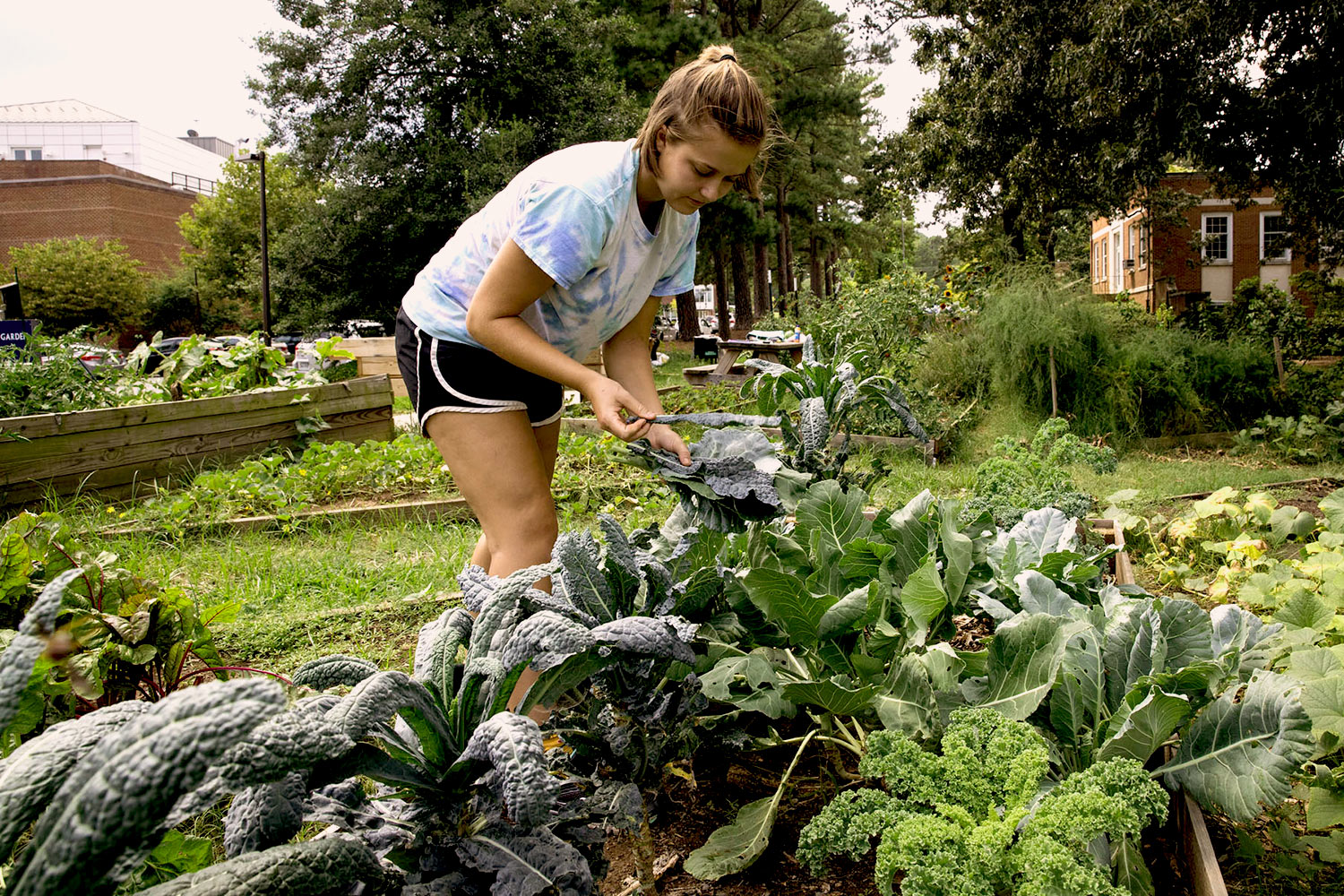Both feet and cars frequently travel the intersection of Alderman and McCormick Roads, as University of Virginia students make their way to classes, dorms or a meal at Observatory Hill Dining Hall.
But amid the hustle and bustle, on a plot of greenery adjacent to the Astronomy Building, is a student-run space that is ripe with sprouting tomatoes, budding lavender, growing sunflowers and more: the UVA Community Garden. The garden is maintained through the work of students across academic programs and student organizations, but it is housed within the School of Architecture’s Department of Urban and Environmental Planning and is a project of the Student Council’s Sustainability Committee.
While interns and members of the garden’s leadership team are vital in the formal management of the garden, the word “community” is key; it’s open to anyone who wants to volunteer their time or simply enjoy the space.
“It’s such a great community space for a reason,” said Elise Watt, a rising third-year student who spent her summer managing the garden through a Charlottesville Sustainable Agriculture Internship. “A lot of people will come and sit here to eat lunch. Some will take produce, and I’ve even seen people come by with their own watering cans and start watering the garden.”
UVA boasts two other gardens: the Hereford Heritage Garden and the Morven Kitchen Garden. Each focuses on teaching lessons in sustainability through the hands-on experience and care that is essential to their maintenance.
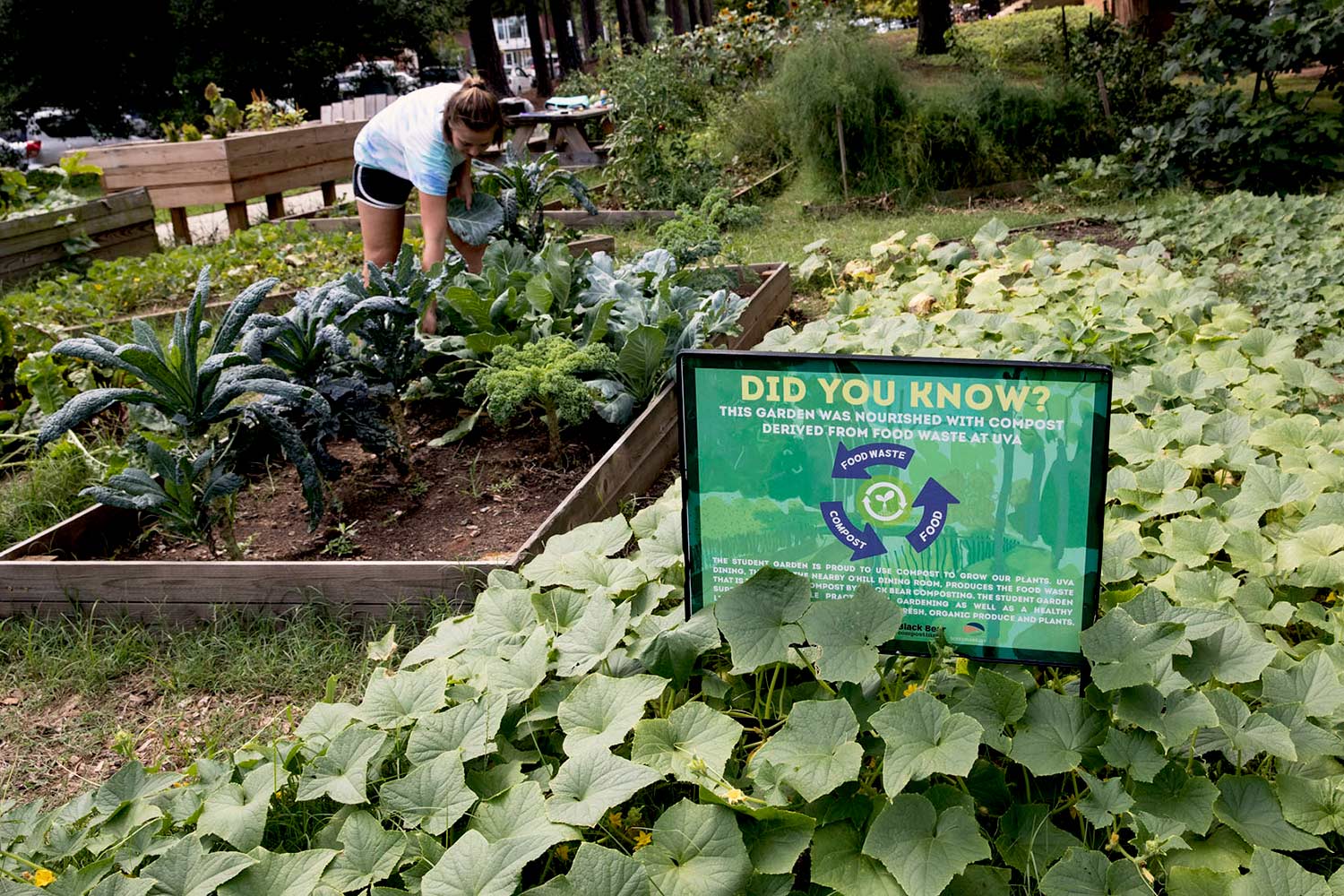
The UVA Community Garden, a student initiative, serves as a continuous example of organic gardening and sustainability.
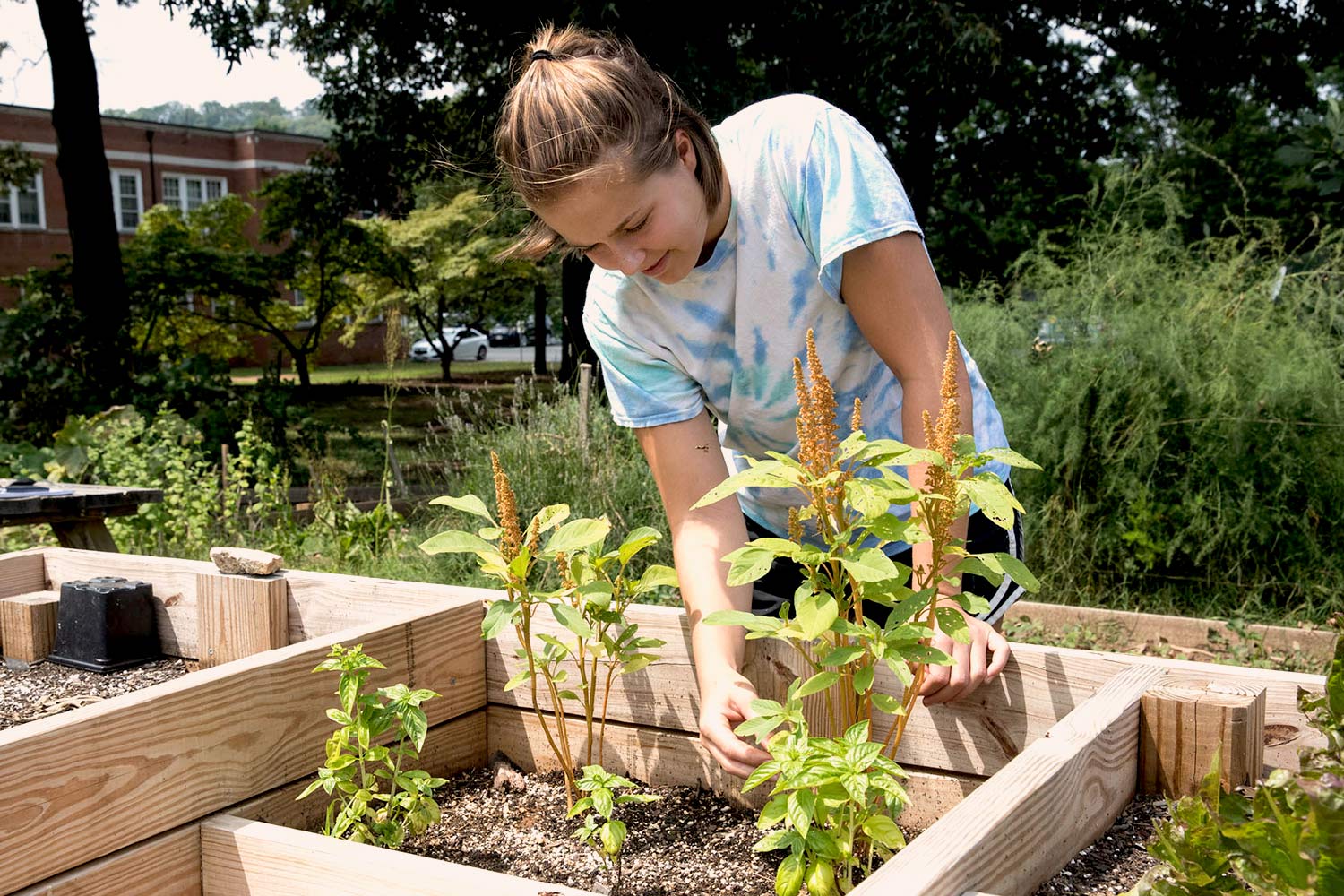
: A wheelchair-accessible garden bed, a project completed by students in the UVA School of Architecture’s Freedom By Design community service program, is one of many service projects that have contributed to the functioning of the Community Garden.
Garden projects have included building cold frames that allow crops to grow throughout the winter months, made possible through a UVA Green Initiatives Funding Tomorrow grant; and an eight-bin rotational composting system built by Engineering Students Without Borders.
“A lot of different student organizations are touching the garden in one way or another,” Watt said. “It gets a lot of traffic.”
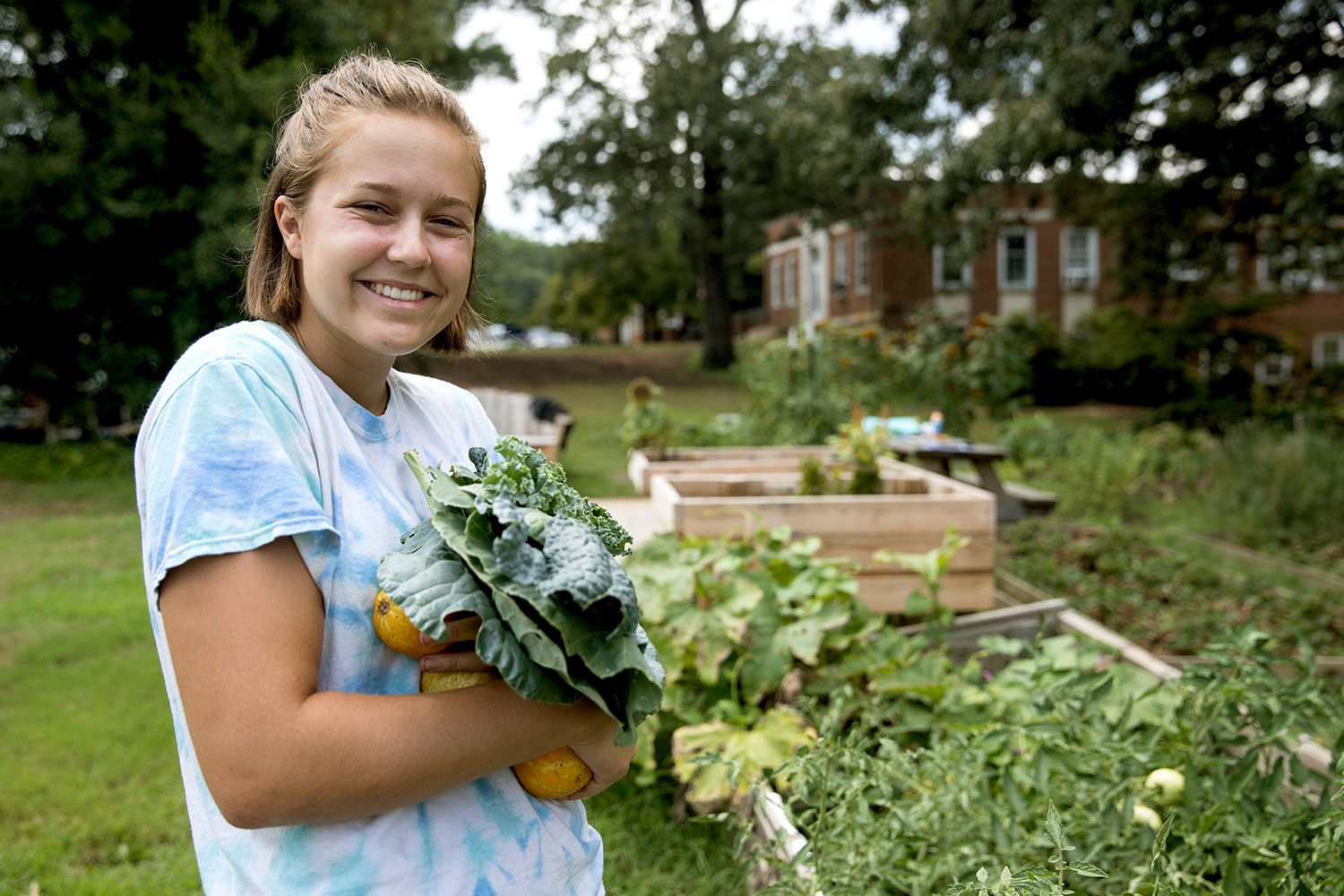
Watt says that once she discovered the community garden, it quickly became one of her favorite spots on Grounds.
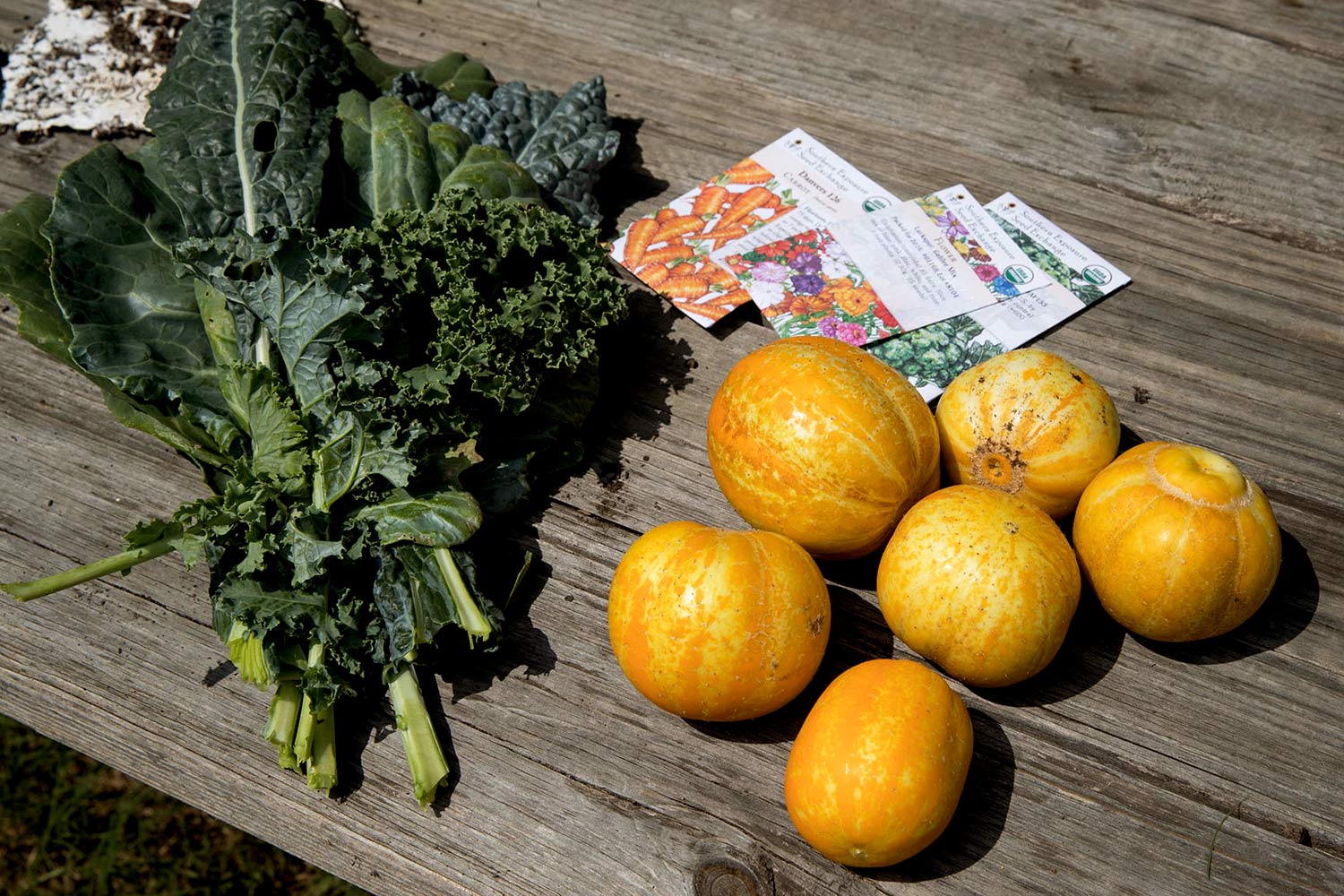
During work days at the garden, interns and volunteers perform a variety of tasks, including planting seeds, pulling weeds, watering the beds and harvesting crops – like these fresh citrus cucumbers.
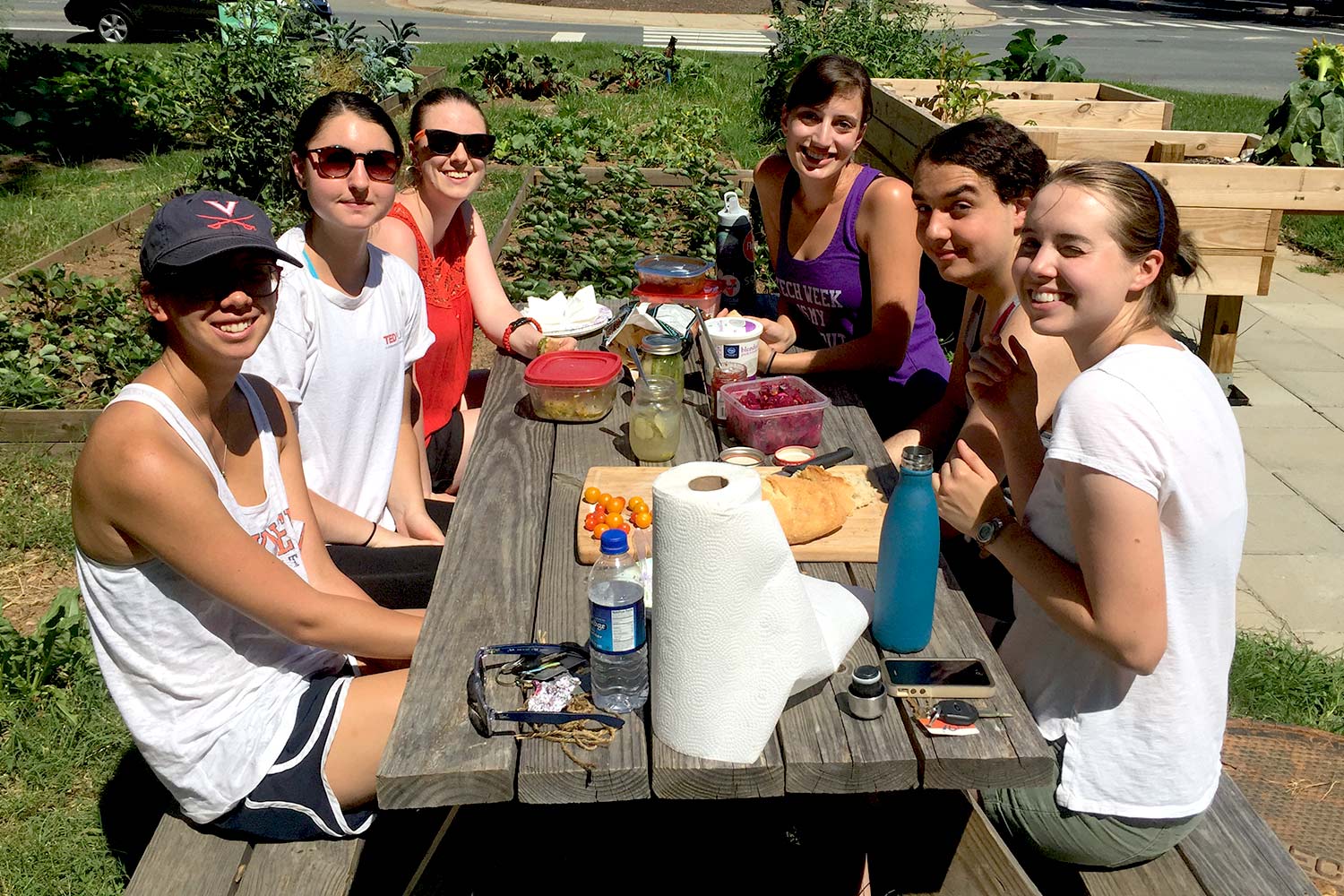
A group of volunteers reap the rewards of their work through a potluck meal featuring foods made with garden ingredients.
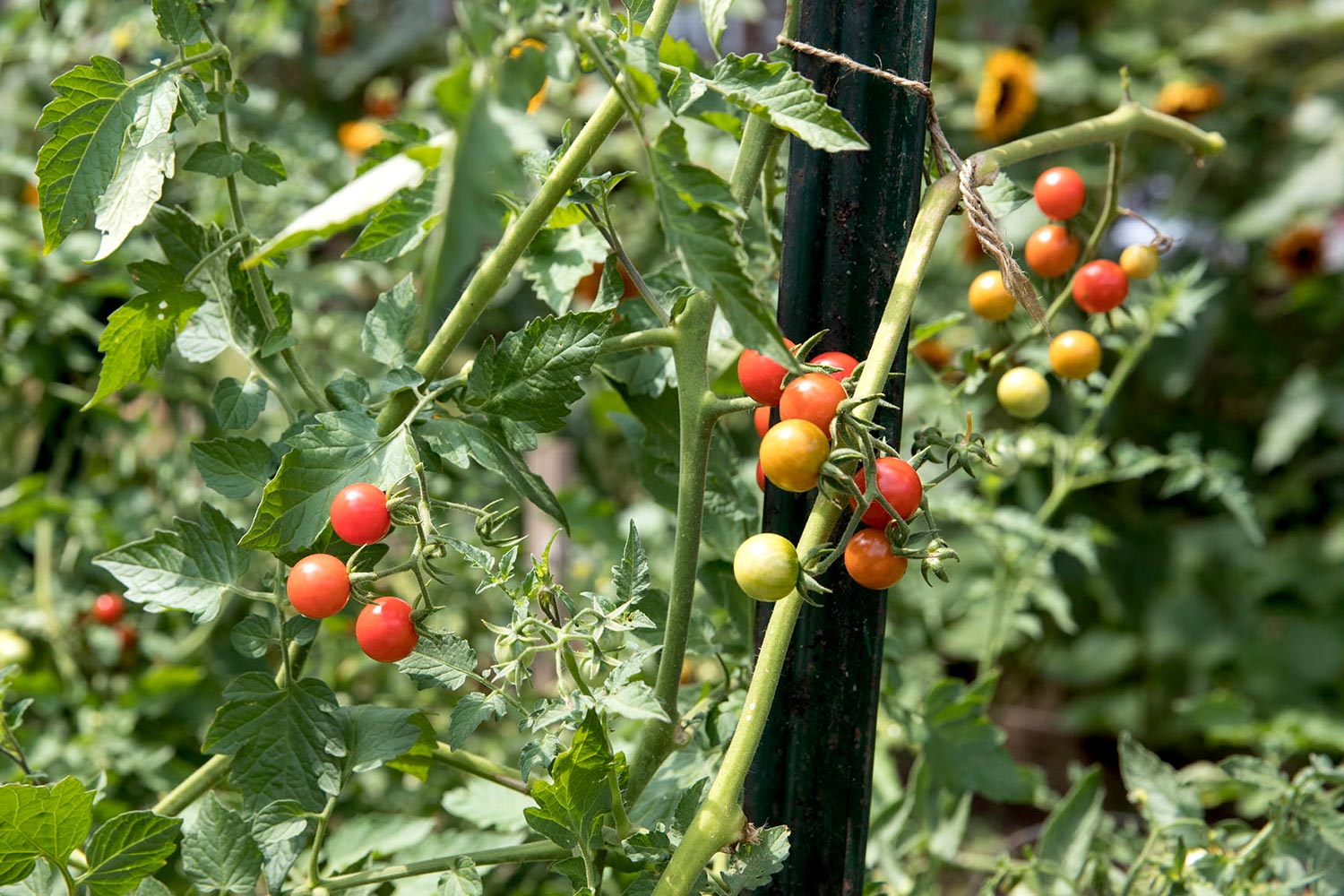
Red and juicy tomatoes are another crop that seem to be growing in abundance this summer. According to Watt, a large portion of the fruits and vegetables harvested from the garden is donated to a homeless day shelter in Charlottesville, The Haven.
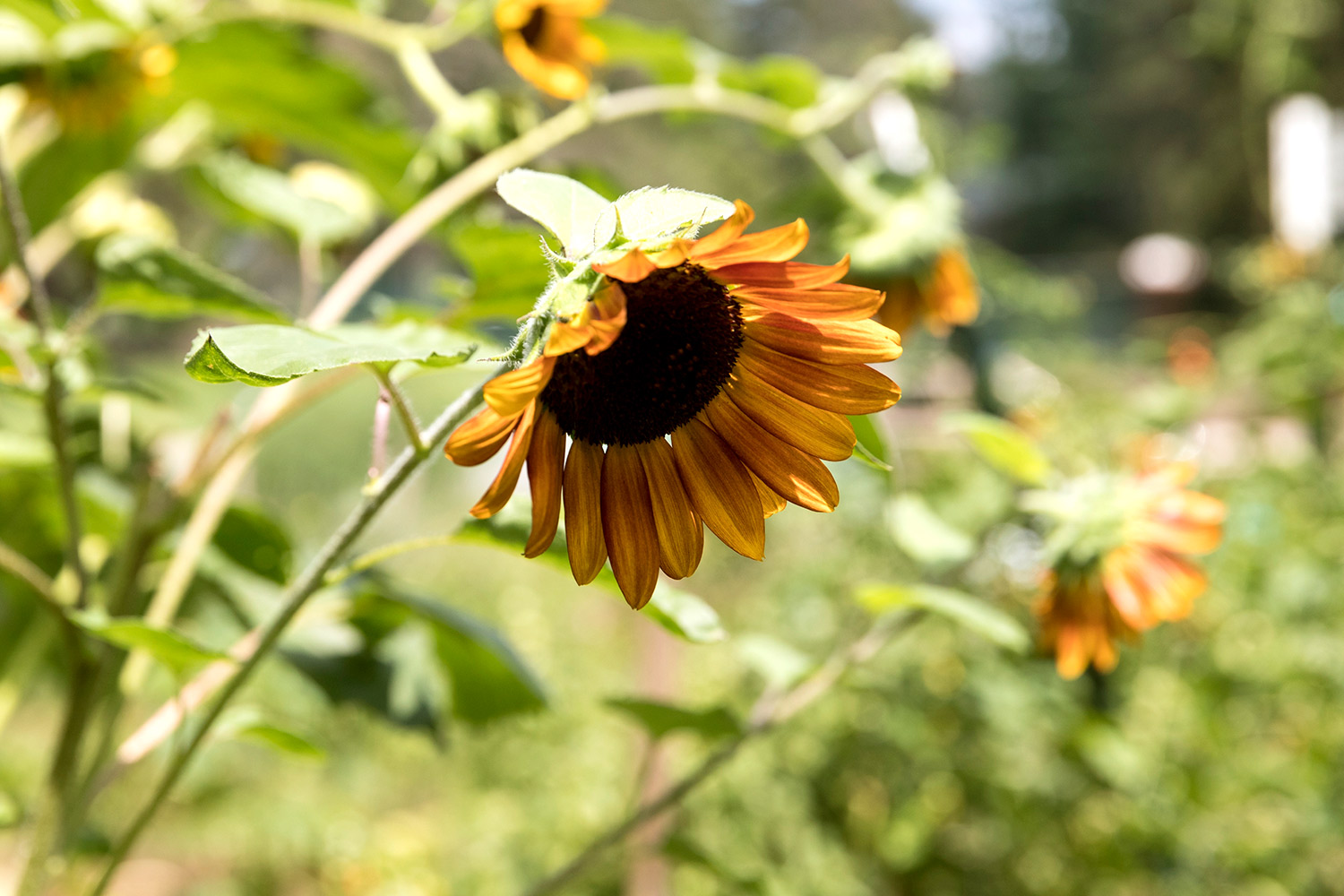
A bed of sunflowers located in the garden offers its own edible seeds – and enhances the aesthetic appeal for passers-by.
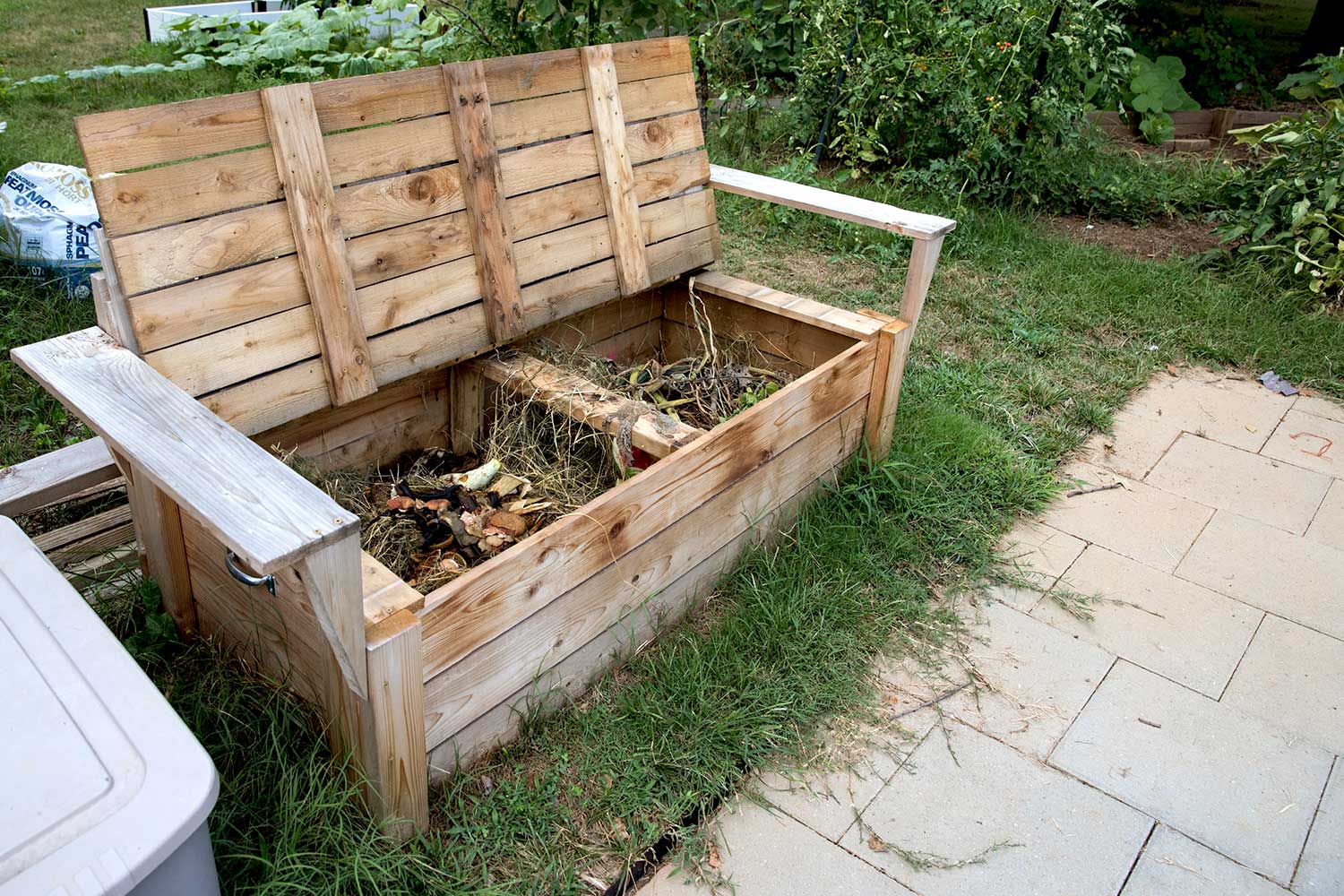
Even those fruits and vegetables that don’t get eaten have a place in the Community Garden. This sustainability project, completed by Watt, is a compost receptacle that doubles as a bench for anyone who wants to take a load off his or her feet.

According to Watt, the Community Garden is a special space on Grounds that brings people together, whether they have a green thumb or not.
Media Contact
Article Information
August 8, 2016
/content/uva-community-garden-grows-student-thirst-lessons-sustainability

